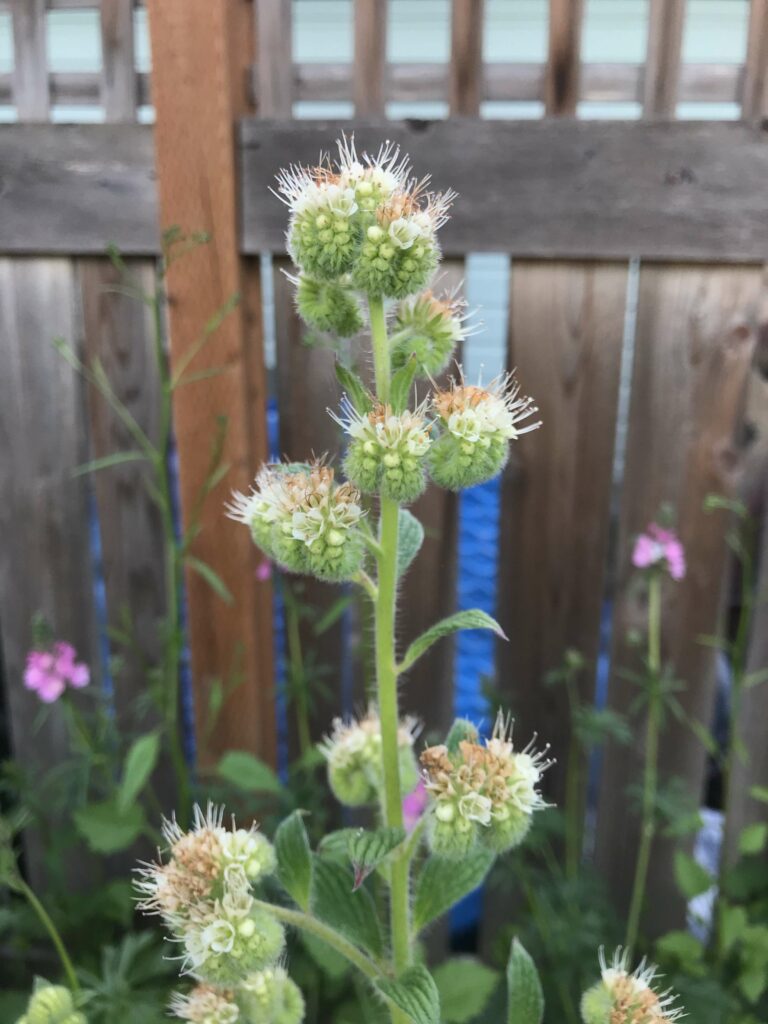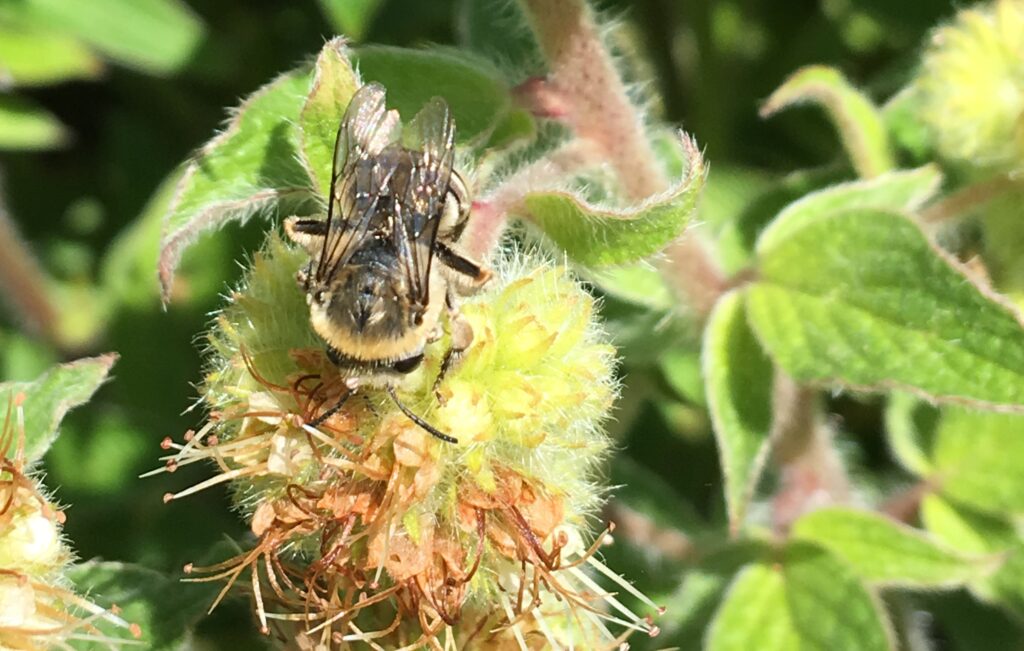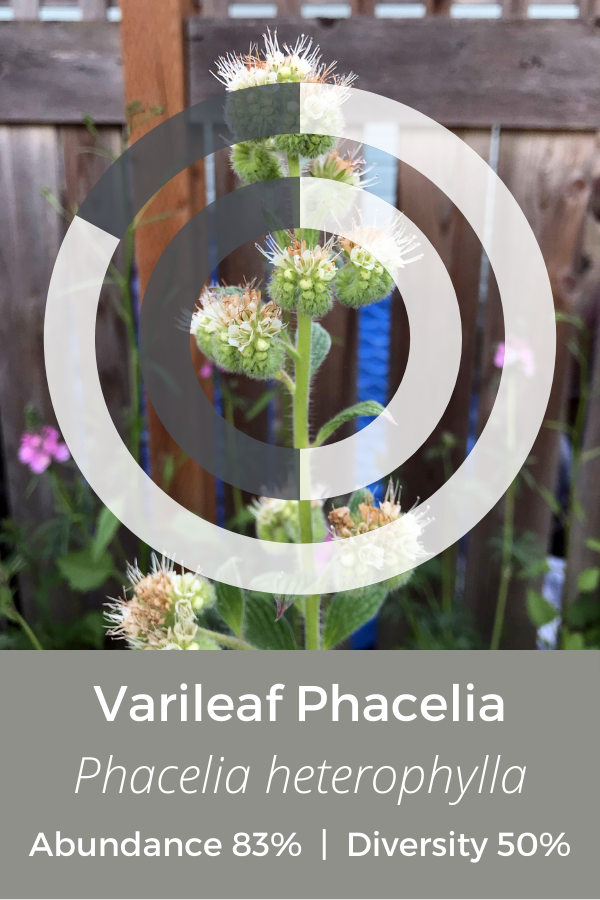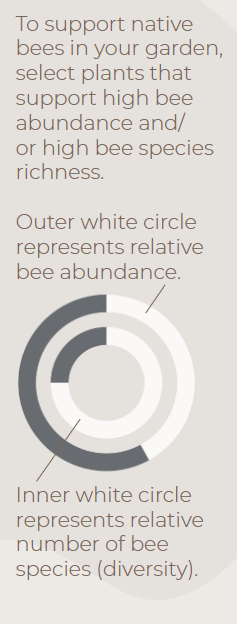The Garden Ecology Lab’s Pollinator Plant PR Campaign Presents….. Varileaf Phacelia!
The Garden Ecology Lab is releasing a series of plant profiles of the top 10 Oregon native plants for pollinators, based on Aaron Anderson’s 2017-2019 field trials of 23 Oregon native plants. We will feature one plant per week for 10 weeks, this is week 4! Profiles will include photos, planting information, and will highlight common pollinators of each plant.

CC Some rights reserved.
Plant Facts
- Scientific Name: Phacelia heterophylla
- Life Cycle: Biennial/ annual, typically grown as an annual in Oregon
- Growth Habit: Upright, mounding
- Bloom Duration: April – July
- Hardiness Zone: 3-7
- Special Traits: Shade tolerant, drought tolerant
- Light requirements: Full sun to part shade
- When to plant: Seeds should be sown in the fall, starts may be planted in the fall or spring after the last chance of frost.
Pollinator Facts
- Varileaf Phacelia provides both nectar and pollen to its insect visitors.
- Phacelia was found to be associated with five bee species in Aaron’s research: the obscure bumblebee (Bombus caliginosus), Edward’s long-horned bee (Eucera edwardsii), the fuzzy-horned bumblebee (Bombus mixtus), the confluent miner bee (Panurginus atriceps), and the yellow-faced bumblebee (Bombus vosnesenskii).
- Phacelia is also a larval host for 4 moths: the Bilobed Looper Moth (Megalographa biloba), the Geranium Plume Moth (Amblyptilia pica), the Orange Tortrix Moth (Argyrotaenia franciscana) and Clepsis fucana1.

Varileaf Phacelia‘s Native Range in Oregon
Phacelia heterophylla is native to most of the Western United States – From Washington to California, east to Montana and south to New Mexico. It is additionally native to Canada, where it is currently considered “imperiled” by the IUCN red list2.

Varileaf Phacelia's native range covers nearly the entire state of Oregon! It's native habitat includes moist conifer forests, riparian areas, sagebrush, mountain brush, as well as in aspen and fir communities3. Maps and legend acquired from the Oregon Flora Project, with Imagery Sourced from Google.
Varileaf Phacelia as a pollinator plant

Varileaf Phacelia is the epitome of an underappreciated pollinator plant! This annual with petite white flowers attracts both an abundance and diversity of insect visitors. With stamen that stick out of the corolla, it heavily advertises its nutritious rewards, attracting plenty of busy bees. In fact, it commonly hosted 5 different bee species in Aaron’s field surveys, including three charismatic bumblebee species, one of which is currently listed as “vulnerable” on the IUCN Red List: Bombus caliginosus, the obscure bumblebee4.


Infographics developed by LeAnn Locher, Aaron Anderson, and Gail Langellotto.
Abundance and Diversity Calculations. Bee abundance was calculated using estimated marginal means of bee visitation to each of our study plants from 5-minute observations conducted from Aaron’s 2017-2019 field seasons. Estimated marginal means (EM Means) were assigned to categorical values and averaged across years to yield the following categories: 0% = Very Low =EM mean below 0.49; 25% = Low = EM mean of 0.50 to 0.99; 50% = Moderate = EM mean of 1 to 1.49; 75% = High = EM mean of 1.50 to 1.99; and 100% = Very high = EM mean above 2.0.
Bee diversity was based on the total sum of species collected on each of our study plants from 2017 to 2019. A Chao 2 Estimator was used to estimate total expected species richness for each plant; Chao 2 estimates were then used to create categorical values, as follows: 0% = Very Low = 9.99 or lower; 25% = Low = 10 to 14.99; 50% = Moderate = 15 to 19.99; 75% = High = 20 to 24.99; 100% = Very high = 25 or higher.
In a survey of gardeners conducted by Aaron and the Garden Ecology Lab, Phacelia heterophylla ranked last among 23 native plants scored for their aesthetic appeal. It may appear “weedy” to some gardeners, but as an annual, it could easily be interspersed with more attractive annual face flowers (such as California poppy, meadowfoam, farewell to spring, or baby blue eyes) to create a colorful and nutritious pollinator garden. Varileaf Phacelia is also a great native annual to include in dryland pollinator gardens, considering it is drought tolerant and able to grow in both nutrient poor and rocky soils.
Did you know?
Photo by iNaturalist user jwlipe. CC Some rights reserved.
Varileaf Phacelia also has the common name "Variegate Scorpionweed", and the pictures above can show you exactly why! It's flowers are borne on elongated stems which are tightly curled, similar to a fiddlehead from a fern! The flowers bloom from the base to the apex of the stem, and the "scorpion tail" slowly unravels as the blooms travel up the stem.
Photos from the field
Of all of the plants we highlight in this 10-week series, Varileaf Phacelia is the one plant that Gail regularly says is in great need of it's own public relations (PR) team. The goal of these plant profiles is to share information and photos of these plants that might convince readers to love this plant as much as we (and the bees) do! Let us know which plants have caught your eye, or those that may still take some convincing, by leaving a comment below! 🐝
Tune in next week for the next edition of our Pollinator Plant PR Campaign.









